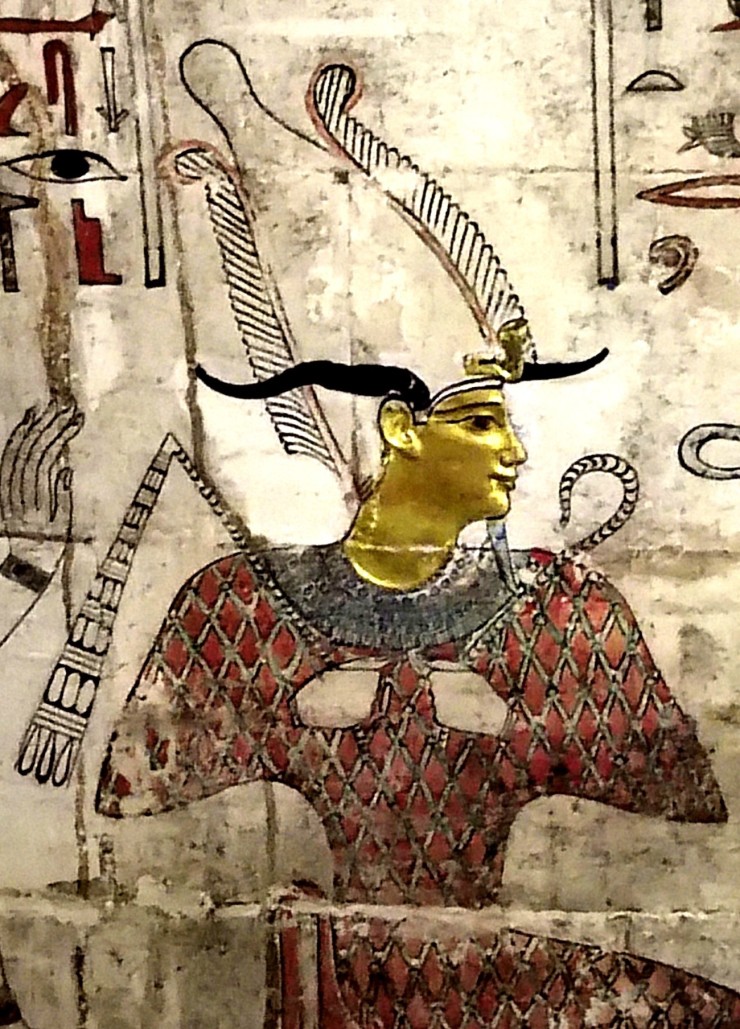Pěkný čtení 
Mummies with golden tongues
Categories: Nálezy nejenom s detektorem na blízkém východě
In the ancient city of Oxyrhynchus, about 150 km from Cairo, 52 mummies of the Ptolemaic dynasty were discovered.13 mummies had golden tongues in their mouths, one had golden nail plates. Richly decorated tombs were also discovered, with amulets and other objects with ritual themes.
The site of Al-Bahnasa in the governorate of Minya has been jointly investigated by an Egyptian-Spanish mission from the University of Barcelona and the Institute of the Ancient Near East since 1992. Some of the ritual texts and deity murals discovered this year are the first ever examples of their kind. They represent a new source of information on religious practices in the area during the Ptolemaic dynasty (323 BC to 30 BC).
Researchers first discovered a rectangular stone shaft leading to the main hall and three chambers: "In the chambers we found dozens of mummies, carefully placed side by side, suggesting that it was a communal burial site," explained Spanish supervisor Esther Pons Mellado. In a neighbouring shaft, they then discovered another set of chambers, one of which caught the eye with its colourful inscriptions and artistic decoration.
The depictions on the walls represent the tomb's owner - a man named "Wen-Nefer" and his family in the presence of the deities Anup, Usira, Atum, Horus and Thovta. The ceiling is decorated with a beautiful figure of the sky goddess Nut surrounded by stars and sacred barges carrying deities including Cheprer, Rea and Atum. The chamber also contained four limestone sarcophagi.
Spanish team co-leader Maite Mascourt highlighted the fascinating discovery of a thin layer of gold on the face of one mummy, mummified under the patronage of the god Anup. Similar gilding adorns depictions of Osiris, Eset and Nebthet standing in front of and behind the deceased. "These vivid scenes provide an unprecedented insight into the funerary art of the region," Mascourt said.
One tomb containing the remains of an adult woman was partially looted shortly after her burial. Yet inside, archaeologists still found beads, an amulet, a figure of the god Horus and two more golden tongues. Another tomb was still sealed. It contained the mummified remains of an adult male with a golden tongue and four vessels containing his embalmed organs. The as yet undeciphered inscriptions on the vessels are likely to identify the deceased. A scarab heart amulet was also found in situ, which is very rare.
In addition, 400 pieces of funerary pottery, including amulets, Jed pillars, Vedic eyes and figurines of deities were discovered. The golden tongues and nails were meant to improve the speech and gesticulation of the deceased so that they could address Osiris and the other gods who decided their entry into the afterlife.
Roman Nemec
Sources: thehistoryblog.com, ahram.org.eg
- You can take a look at the metal detector findings from the Roman period here: Roman Period

Sacred Scarabs

Anubis accompanied by the deceased

mural of the goddess Nut

sacred barge

golden tongues from the Ptolemaic period

Osiris with a gilded face

a set of scarabs, figurines and amulets

gold nail foils from the Ptolemaic period
The article is included in categories:
- Archive of articles > Archaeology > Finds and rescue research abroad > Nálezy nejenom s detektorem na blízkém východě
Post
To byla aspoň doba, zlatých jazyků 👍👍 po nás sa budou hojně nacházat, leda tak,zlé jazyčiska 🤓
Ty Egyptské artefakty, jsou takové celosvětově fascinující ,jsou jako na nějakém piedestalu, není sa čemu divit té nadheře. 👍👍👍
https://www.stoplusjednicka.cz/evropska-muzea-jsou-plna-nejslavnejsich-del-sveta-budou-je-ted-muset-vracet




